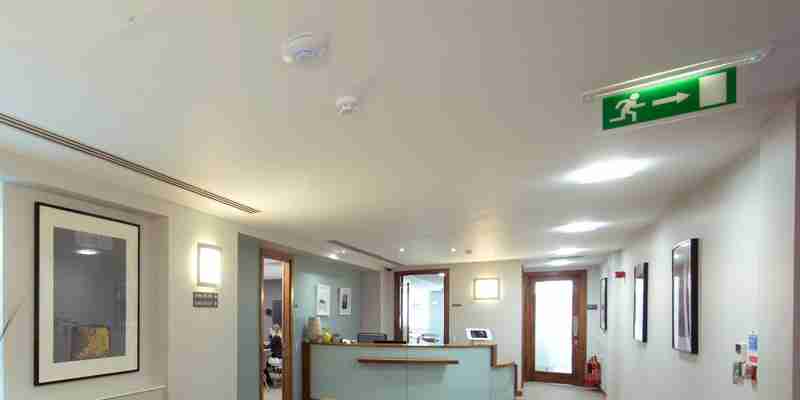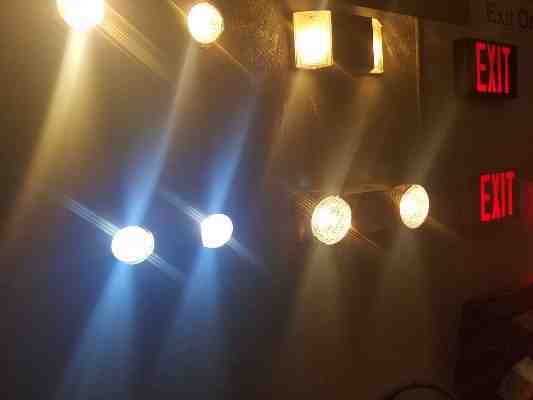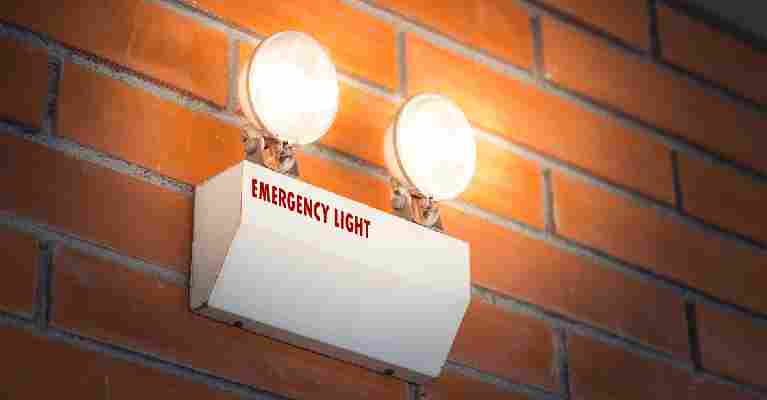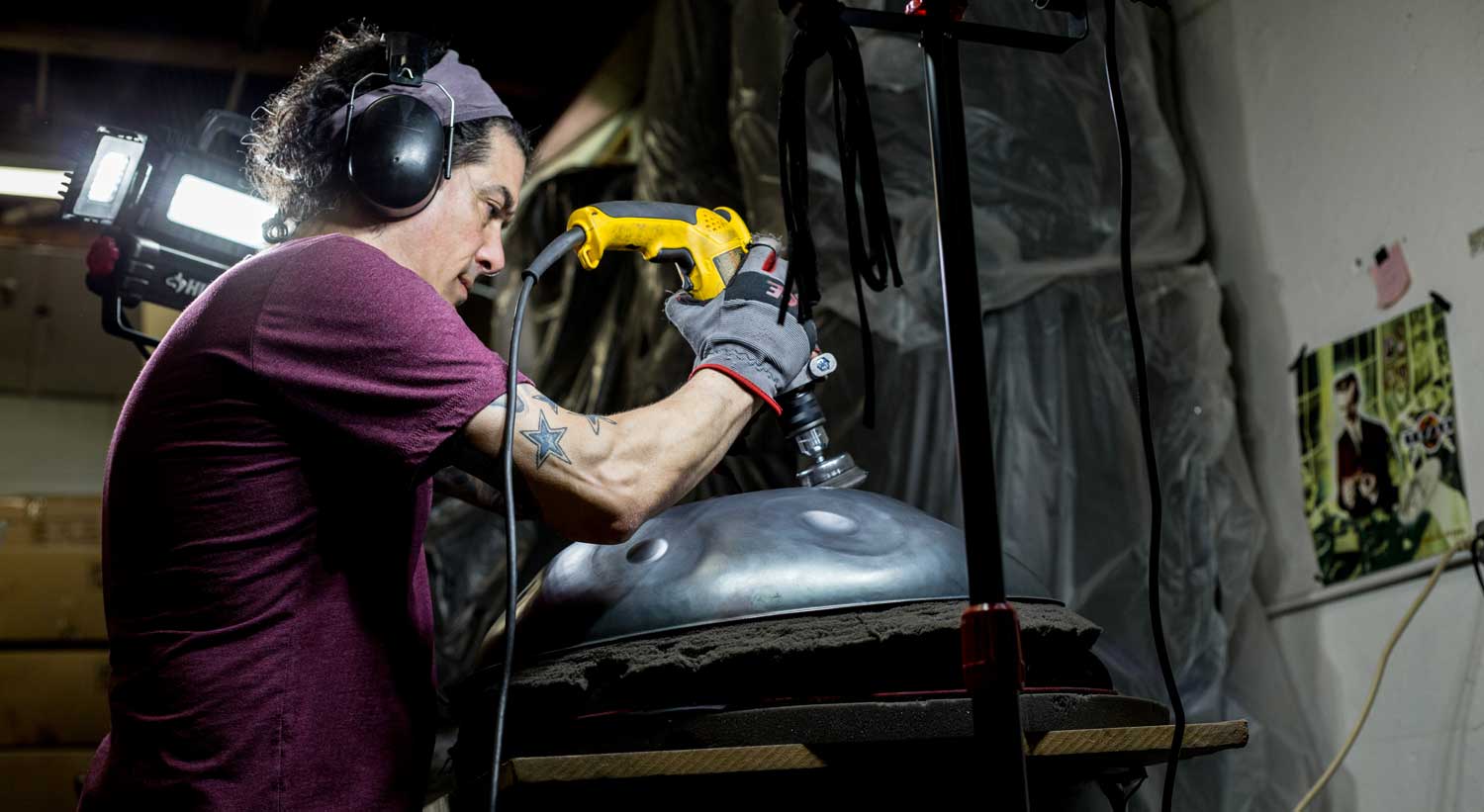The Purpose of Installing Emergency Lighting in your Workplace
What is Emergency Lighting?

Emergency lighting provides a back-up light source in the event of a power cut, turning itself on automatically or allowing light fittings to remain on. The purpose of emergency lighting is to allow occupants to easily locate the exits to evacuate the building safely. Emergency lighting is designed to illuminate escape routes such as corridors and stairways whilst providing a clear escape route signalled using lights therefore, preventing panic and danger for the occupants.
Why is Emergency Lighting Provided?
Emergency lighting and fire safety regulations now require nearly all buildings to have emergency lighting fitted and fully operational. Emergency lighting is an essential feature for commercial buildings to ensure the safety of the occupants. The emergency lighting is provided with a generator powered lighting system to ensure that the lighting remains fully operational, especially during an event the power supply is lost. It is crucial to have an emergency lighting system in place to provide a clear route for occupants to leave the building in the safety way possible and emergency actions can be safely carried out. The installation of a functional, well designed, and clear emergency lighting system will protect lives. Therefore, it is hugely important to select the appropriate range of emergency fittings.
There are many benefits to emergency light installation. The key benefit of emergency lighting is the effectiveness as it provides constant lighting therefore, when your light fails it will not be complete darkness and people within the building can evacuate calmly. It is easy to set up emergency lighting. Most emergency lighting is powered by LED technology which is more energy efficient than the traditional incandescent bulbs. LED emergency light fittings have a longer lifespan which is a crucial quality for an emergency light, saving your business money in the long run.
The Different Types of Emergency Lighting:
When installing a new emergency lighting system, there are two types of emergency lights; maintained and non-maintained emergency lights. What is the difference between maintained and non-maintained emergency lighting. What is the difference between maintained and non-maitained emergency lighting. Because maintained lights are continuously on, they consume more energy. Even non-maintained lights, however, require a steady trickle charge from the mains to keep the backup battery charged. Non-maintained emergency lights, on the other hand, will use less energy during their lifetime.
Maintained vs Non-Maintained Emergency Lights
What is Maintained Emergency Lights?
Maintained emergency lighting is a luminaire in which the emergency light will be lit continuously, even throughout a power shortage. The main purpose is to allow pathways and emergency exits to be illuminated and provide a clear guide for people to exit the building. This type of maintained emergency lighting is more common in cinemas and theatres. The reason is because these areas are usually in darkness, therefore, require a maintained emergency light to illuminate the pathways and exits.
If you're looking for an emergency light for a public place, you'll want to go with well-maintained emergency lighting. This guarantees that all exit points and escape routes are illuminated at all times, which aids evacuation in the event of a power outage.
The most important role of an emergency light, whether maintained or not, is to provide adequate lighting when the mains supply is disrupted. When this happens, the luminaire switches to emergency illumination mode, drawing power from its backup battery to keep working.
What is Non-maintained Emergency Lights?
Non-maintained emergency lighting are luminaires which are not normally lit. The light is designed to turn on instantly during the event of a power cut using its battery back-up supply and should last a minimum of three hours. Non-maintained emergency lighting has the same purpose as maintained lighting to safely illuminate pathways for a safe exit. It is important to test non-maintained lighting regularly to ensure the fitting is working correctly. Non maintained emergency lighting is commonly used within workplaces, such as offices where people are familiar with the escape routes.
Luminaires that haven't been maintained can be found in the following places, commercial envirnoments such as offices and factories.
If you want more information about:
Check out our other blog that explains this in more detail - https://bit.ly/3groSzx.
How to wire Emergency Lights:
It is important that electricians understand and comply with current Building Regulations and any local authority requirements when fitting emergency lighting. British and Irish Standards provide electricians and lighting designers with clear guidelines to work to. These standards are the minimum safe standards required by law.
When wiring emergency lighting, companies must have correct exit signs to comply with current regulations. It is important the emergency lighting is placed at an appropriate viewing distance. The emergency lighting should not be mounted higher than 20° above the horizontal viewing of the maximum viewing distance of the sign.
It is vital that before the installation of emergency lighting, the breaker the emergency lighting is connected to is tripped to ensure safe installation. This will prevent risk of electrical shock and injury. Electricians should familiarise themselves with the instructions and guidelines to ensure safe fitting.
The Emergency Light Installation:
The first step is to ensure the circuit is turned OFF before starting the procedure and identify the electrical voltage of the connection that is being made to the safety light fittings. The next step is to examine the unit connections. It is important to connect the wires with care. The next step is to switch the power on and allow the battery backup system to charge up to 24 hours. Finally, when the battery is charged, test the unit to ensure full functionality.
It can be hazardous to incorrectly install emergency lighting because it can burn out the transformer and circuit board causing damage. Therefore, installing emergency lighting should be completed by fully trained professionals. Once the emergency lighting systems are installed to the required standard, it is important the owner of the premises maintains the fixture by organising a fully rated duration test every year.
Which type of Emergency Lighting is the best?
The building and fire legislations require all public premises to have fitted and fully operational emergency lighting therefore, choosing the most effective emergency lighting for your premise is crucial.
Our team at Meteor Electrical have a wide range of emergency lighting to choose from to ensure your home or business is efficiently lit up during the event of a power shortage. The range consists of LED emergency lighting, providing a strong light output against a lower wattage, allowing you to save huge amounts on your energy costs.
We stock the Kosnic’s LED Emergency Exit Sign. Kosnic’s emergency light is a self-contained, multi-purpose, non-maintained or maintained 3-hour emergency luminaire solution. It is available in both standard and self-test versions.
· All legends included
· Maintained and non-maintained option
· 20mm Conduit entry
· IP65 and IK10 (vandal resistant) for internal & external uses.
· Dual entry push-wire terminal block for easy loop-in loop-out wiring
· Available in self-test version
· BESA box fitting points
The 5W emergency exit bulkhead can be used with or without the emergency exit graphics. It is supplied with adaptable self-adhesive graphics that can be arranged to indicate escape routes, as necessary.
If you require further advice or help with designing your emergency lighting systems, please contact our lighting specialists via email at [email protected].
Intro to Emergency Lighting
Emergency lighting plays a crucial role in fire safety for your building. It ensures the safety of the building’s occupants in case of an emergency when evacuation routes may be visually obstructed, and navigation of the building becomes confusing and even dangerous.

You want to ensure the safety of those inside your building, as well as efficient use of your finances through code compliance and selection of the best emergency lighting system possible for your structure.
Read on to learn more about the basics of emergency lighting systems, the codes that regulate them, and some complications to keep in mind when selecting, updating, and/or maintaining your system.
What is Emergency Lighting and Why it Matters
When planning fire protection for your building, you may be tempted to think of extinguishment methods, such as fire sprinklers, more than anything else. But emergency and exit lighting is a crucial component of any successful fire safety system, and it is required by law in most commercial and public structures.
Emergency lighting is responsible for illuminating the means of egress - the pathway towards exits, the exits themselves, and the point of discharge - in the event of an emergency.
Well-lit and clearly designated pathways are necessary due to the smoke, power outages, and other obstacles that may obscure and obstruct exits and evacuation routes in the event of a fire. Emergency lighting helps those within the structure to safely and quickly find their way out.
Elements of Emergency Lighting Systems
According to NFPA 101, Article 7.10, the elements which compose an emergency lighting system include:
Lighting units which illuminate and designate the means of egress when power failure has occurred
Exit signs and lighting illuminating and designating the exits and discharge points
Essentially, it is all emergency lights and signs that illuminate evacuation routes within the building, including stairwells, and designate all exit and discharge points.
Possible Power Sources
Means of egress emergency lighting are powered by one of two emergency power sources: battery-power or on-site emergency generators.
Battery-Power: battery-powered emergency egress systems are subject to NFPA 111, and they must be compliant with UL 924 standard, which is compatible with both NFPA and IBC (International Building Code) regulations.
The most popular battery-powered emergency lights are self-contained, incorporating both the lamps and a battery source with a charger inside a single enclosure. The most recognizable and common of these lights is often referred to as “frog-eye” or “bug-eye” due to the bulbous nature of its two lights.
Emergency battery-powered lighting is designed to turn on if the general lighting voltage falls to 80% or less of normal. The emergency lighting will remain on until normal power has returned for at least 15 minutes.
The batteries within these units are sealed, lead-acid batteries, which are maintenance-free. Their lifespan is approximately 7-years. Some self-contained battery-powered units are powerful enough to supply power to remote lamp heads and exit lights as well.
Required functional testing: testing can be completed in a few different ways: a handheld remote infrared device that is aimed at the unit; an integral electronic device that initiates code required tests automatically; or an integral test switch. All testing must be well documented for review by the AHJ.
battery-powered emergency egress systems are subject to NFPA 111, and they must be compliant with UL 924 standard, which is compatible with both NFPA and IBC (International Building Code) regulations. The most popular battery-powered emergency lights are self-contained, incorporating both the lamps and a battery source with a charger inside a single enclosure. The most recognizable and common of these lights is often referred to as “frog-eye” or “bug-eye” due to the bulbous nature of its two lights. Emergency battery-powered lighting is designed to turn on if the general lighting voltage falls to 80% or less of normal. The emergency lighting will remain on until normal power has returned for at least 15 minutes. The batteries within these units are sealed, lead-acid batteries, which are maintenance-free. Their lifespan is approximately 7-years. Some self-contained battery-powered units are powerful enough to supply power to remote lamp heads and exit lights as well. testing can be completed in a few different ways: a handheld remote infrared device that is aimed at the unit; an integral electronic device that initiates code required tests automatically; or an integral test switch. All testing must be well documented for review by the AHJ. Emergency Generator Power: in the case of a power outage, on-site generators are required to be on within 10 seconds of the outage and must run for a minimum of 2 hours. Note that the required running times will vary depending on the type of building and its use. Codes regulating egress lighting classification requirements, lighting levels, and automatic start and transfer can be found in NFPA 101, NFPA 70 and NFPA 99.
Required functional testing: testing of the generators and their automatic transfer switch (ATS) is regulated by NFPA 110, which dictates monthly testing of diesel generators for 30 minutes and, typically, annual testing for four hours. All testing must be witnessed and documented. For further details regulating monthly and annual testing, refer to NFPA 110.
Emergency Lighting Codes and Regulations
There are a host of codes regulating emergency and exit lighting, which come from numerous sources, such as the NFPA, IBC, OSHA, etc.
Generally speaking, the codes can be grouped into two categories: lighting placement/duration and testing:
Means of egress emergency lighting must provide lighting that adheres to the following parameters: a 1.0 fc average, a 0.1 fc minimum, and a 40:1 uniformity ratio.
All areas of egress must provide more than one lamp to service the area.
Exit signs must be either externally illuminated or internally illuminated and cannot be more than 100 ft apart from each other.
All exits that are not the main exterior doors must be marked by approved exit signs, which must be visible from all directions of the exit access.
All egress and exit lighting must provide 90 continuous minutes of illumination.
Functional testing must be performed monthly for a period of 30 seconds.
Annually, a 1.5-hour test is required for the battery-powered back-up systems.
Written documentation must be kept and presented to confirm both monthly and annual functional testing.
Functional testing can be completed by self-testing as long as records are kept, and it is compliant with the mandates.
Some emergency lighting systems provide computer-based self-testing, in which case you can present a computer-generated report documenting the history of the tests to the AHJ for review.
The following highlight the essential requirements regarding placement and length of egress emergency lighting:NFPA 101, in Article 7.9.3 stipulates that emergency lighting systems must undergo periodic testing:
The above is by no means a complete listing or explanation of all the codes which regulate the process of creating, installing, and testing emergency lighting systems. Furthermore, the application of codes is largely dependent upon the classification, size, and use of your building, as well as your jurisdiction. One size does not fit all.
For further details, please reference the IBC, NFPA 70, NFPA 99, NFPA 101, NPA 110, and NFPA 111. The best way to ensure that the system which you are contemplating or currently have is up to code, and the best for your building is by contacting fire safety experts such as Koorsen and/or your local AHJ.
Call the Experts
Whether you need help with monthly and annual maintenance and testing of your current emergency lighting system, require updating and replacement of your system, or are preparing a building for installation of a new system, the experts at Koorsen Fire & Security can help. With over 70 years of business in the industry and their factory trained and NICET certified technicians, Koorsen is a name you can trust.
Call the experts at Koorsen to ensure that your emergency lighting system is compliant but also offers the best protection and cost-effective solution for your building today.
Why Are Industrial Emergency Lights Important?
We have all sat at home, and the lights go out. We scramble in the dark to find our candles and flashlights so we can function. At the very least, we turn the flashlight on from our phones to help us navigate our home and not trip over each other, our furniture, our pets, or those wonderful toys are strewn across the floor.

At home, we only need to navigate around our family or a small group of people. We know the layout of our home and know the people. In a commercial building, we are not as lucky. An Industrial emergency lighting system helps people navigate their way to safety. Unlike home, you are in unfamiliar territory. Even if you work in the location, there are people you do not know and other buildings you may not know how to navigate.
What Are Industrial Emergency Lights?
Industrial emergency lights are the lighting system that comes on when the lights go out, or the fire system is activated. This system includes the illuminated EXIT sign as well as the emergency lighting systems lining the hallway of the facility.
Emergency lighting is part of a regulated fire safety system. Along with emergency fire sprinklers and alarms, the emergency and exit lights help people escape the fire as well as aid firefighters when entering the building to save people and put out the fire. The lights will come on when the fire alarm is triggered and provide plenty of illumination to help see through not only the dark but smoke and fire.
What Are the Laws Involving Industrial Emergency Lights?
California code requires what is known as “Emergency Illumination.” This regulation directly relates to the features included in an industrial building’s emergency response system. Private homes are not required to have this because they are private dwellings. However, commercial properties are required by law to have some type of industrial emergency lights.
The regulation mandates many, but not all, requirements of the lighting system. For instance, the system may include emergency lighting that only comes on when an emergency occurs. This type of lighting is called “non-maintained lighting.” The other kind of lighting is called maintained lighting. It is on all the time.
The law makes two crucial requirements:
All exit signs, egress lighting, and other lighting must be provided to make sure the walkways are well-lit in an emergency The lights must be installed to make sure that even if one bulb goes out, the space is still well-lit.
The NFPA includes the life safety code, which states:
The lights must include a monthly inspection to be compliant with the law. There must be an annual test of the emergency and exit lighting systems
Finally, OSHA’s code of regulations requires:
Adequate and reliable lighting for all exits Proper maintenance such that exit lighting is always in the best possible working condition.
In order to be compliant with California regulations, you must follow these codes. They help ensure all industrial emergency lighting is doing its job to help protect people in a commercial building at all times.
What Benefit Does Emergency Lighting Provide?
Aside from the legal necessity for emergency lighting, there are many benefits for your business and its clientele. Emergency lighting and EXIT lighting help:
Direct individuals to viable exits
Keep employees safe during a power outage
Keep areas lit during a fire or other emergency situation
Help firefighters and police navigate the building in the event of an emergency
The illumination that can be seen through smoke, fire, and water
May help lower insurance premiums
Keeps areas lit during hours the building is closed, which can deter amateur criminals
Uses LED technology to keep costs down while on
What Is the Installation Process for Industrial Emergency Lighting?
Industrial emergency lighting is part of the fire control system that is required by law. Therefore, this type of emergency lighting cannot be completed by a standard electrician or business owner. A licensed contractor must install the entire system. This contractor should already offer fire protection services and understand the process of installing the sprinkler system and emergency lights that are not part of the standard circuit breaker.
Additionally, they need to be able to work off a limited generator. When the power is out, whether because of a regular power outage or an emergency, the lighting system must still work. This installation is done through a specialized installation process that ensures the system will work when there is no other power throughout the building.
How is an Emergency Lighting System Maintained?
As with any electrical system, an industrial emergency lighting system can have issues. Lights can blow out. The sound can stop working. The system can stop responding when the power is out, etc., these issues are typical. However, when they occur with your emergency lighting system, they can be detrimental.
Because of these types of issues, you must inspect your system once a month. An inspection will be able to make sure the system is working, and the bulbs are in working condition. However, an inspection may not catch the occasional issue that may occur.
Therefore, the company that installs your system must maintain your system at a moment’s notice. It is never recommended that you repair your emergency lighting system on your own. You should not even replace a bulb. Instead, call your provider. Their licensed technicians will know how to repair your system, replace a light bulb, and otherwise maintain your system as needed, even between inspections.
Conclusion
The law requires commercial businesses to have industrial emergency lighting. The lighting helps protect the business from amateur intruders. It also helps protect clients and employees in the event of an emergency, lighting the way out of the building and towards safety. Finally, the system helps protect the emergency personnel coming into the building to save those in need. An adequately installed emergency lighting system will allow emergency personnel to see through dense smoke and water, keeping them safe and aware of the exits at all times. These lighting systems can be the difference between life and death in an emergency situation.
To learn more about industrial emergency lighting, contact the experts APFE Corp at 866-238-3404. Our licensed professionals will be happy to answer any questions you have.


![31 Best IPTV Services for FireStick, Android TV, PC [Dec 2021]](https://www.lampsofbible.com/storage/upload/Images/_1639646173_nXrO23JGnM.jpg)





